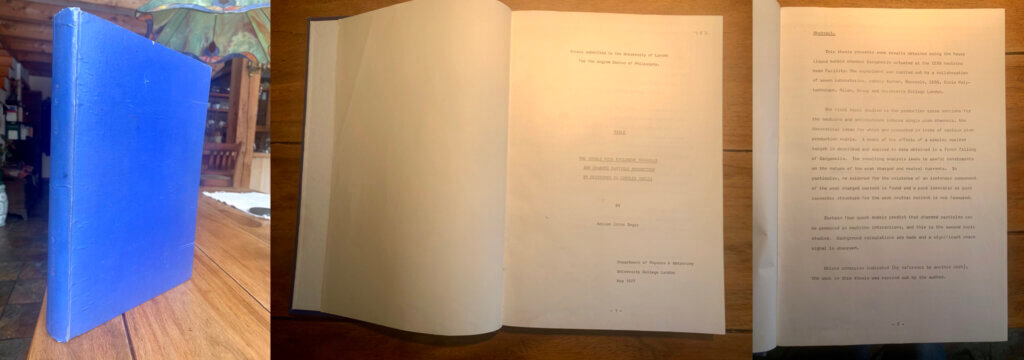Becoming a writer

Outwardly, I’ve succeeded. Since 2005, I’ve written three successful books on meeting design and facilitation and over 800 weekly blog posts on a wide range of topics. About half a million words so far. My books continue to sell, and this blog is the world’s most popular website on meeting design and facilitation.
What I want to share is my struggle to become a writer, in the hope that it may inspire at least one struggling writer to persevere.
Why?
Because…
• I suffered through a long period when writing a book seemed to be something I would never be able to do; and
• So many well-known writers imply that all you need to do is figure out how to organize your writing routine, whereupon turning out hundreds of words a day becomes no big deal. This is not true for 99.99% of mortals.
So here’s my story.
Write a book? You must be joking!
For the first fifty years of my life, I wrote very little. I went to a British school designed to cram students’ brains with what they needed to know to get into Oxford or Cambridge University. Choosing to be a physicist dictated that my English classes ended when I was 16 so I could exclusively study math and science.
In college, the only writing I did was lab reports, answers to physics questions, tests, and exams, and my Ph.D. thesis. Yes, my thesis was a book, but the required thesis style was so formal that it was easy for me to use the form.

After a postdoctoral year at Tufts, I went on to manage a solar manufacturing company, teach college computer science, and develop a successful information technology consulting practice. I wrote what was needed for these careers, but nothing substantial.
And then in 2005, twenty-eight years later, I felt compelled to write a book about the new ways I’d developed to design and lead conferences that became what the participants wanted and needed. A dozen years of designing and facilitating these events, together with their enthusiastic reception, had convinced me that what I’d created was valuable and important.
I would never have become a writer if I had not felt this strong desire and excitement to share what I had stumbled upon with a wider audience.
Jerry Weinberg‘s Writing Lesson Number One states:
“Never attempt to write something you don’t care about.”
Jerry was right. I would need every scrap of my conviction about the importance of peer conferences to persist in what followed.
Trying to write
To my dismay, when I sat down in 2005 and attempted to turn my thoughts into a book, I was unable to write more than a few coherent sentences before giving up in despair.
It took me weeks to flush out the simplest outline. Even writing one small section of the book seemed a hopeless task.
I tried many things. I:
- set aside time to write every day;
- created a special place in my home to write;
- tried dictating into an early version of Dragon Dictate.
Nothing worked.
I felt stupid and incompetent. Attendees loved my events! The most common feedback was along the lines of “This was so great! I don’t want to go to another traditional conference again.” And yet I was incapable of putting into words the why? and the how? of what I routinely did at the conferences I convened and led.
After months of struggle, I might have given up if I hadn’t participated in a five-day Writer Workshop led by Jerry Weinberg in New Mexico. Jerry’s workshop helped me experience and believe that I was a competent, creative writer who needed to keep writing to get better. I began to write spontaneously about interesting experiences I was having. (Here’s a piece I like that I wrote in twenty minutes: “The Batch Fixer“.)
Despite my boosted confidence, I continued to stumble to write my book. True, I was also working, scaling back my IT consulting business, but I had plenty of time to write. My difficulties were not caused by lack of time. Instead, I felt largely incapable of writing sentences that conveyed what I wanted to say.
Yet somehow, I persevered.
My struggle lasted two years.
Slow progress, eventually leading to triumph
In 2007, something changed. There was no blinding flash of insight. The change came about through “practice man, practice“. But, slowly, I began to be able to write in ways that didn’t cause me to throw up my hands in frustration.
It took another two years to complete the draft of my first book. I found a wonderful editor, Anne Lezak, who was incredibly encouraging. Towards the end of our working relationship, she told me I was a good writer!
Conferences That Work: Creating Events That People Love was published in 2009. It was recognized fairly quickly as an important book on meeting design. 18 years later, the book is still in print and people continue to buy it!
Today, I am not a great writer, but a competent and, I hope, sometimes interesting one. Writing has become easier for me, though I still struggle at times. I continue to post every week on this blog, something I’ve been doing since 2009.
Three lessons I learned that may be helpful to you
Avoid reading successful writers’ descriptions of how they work! Why? Because every writer’s journey and process is different. Mine was unique, and yours will be too.
Don’t spend too much time learning from others. There are hundreds of decent books about the process of learning to write. I have thirty of them, mostly purchased as a distraction from actually practicing writing. If you only read one, make it Anne Lamott’s Bird by Bird: Some Instructions on Writing and Life. If you’re writing nonfiction, also consider Jerry Weinberg’s Weinberg on Writing: The Fieldstone Method.
Seek encouragement. Jerry’s workshop was a life-saver for me. Join a writing group. (I didn’t, but the right one would have helped.) In particular, share your plans for the book with people and writers you respect. I had lunch alone with Jerry during his workshop. His enthusiasm for my conference design work was a huge boost. I also benefited greatly from Naomi Karten‘s kind encouragement both in person and via email. Find your own mentors and use them sparingly and with appreciation. They can be a big help.
Final word
During his workshop, Jerry took us to a local writer’s group. I’ll always remember his big smile when I announced there, for the first time in my life: “I am a writer!” Jerry had primed us to do this when we were asked about ourselves! I’m not sure I fully believed it at the time, but now I can say it with confidence.
“I am a writer!”
My wish is for you to be able to say “I am a writer!” and know it’s true.

